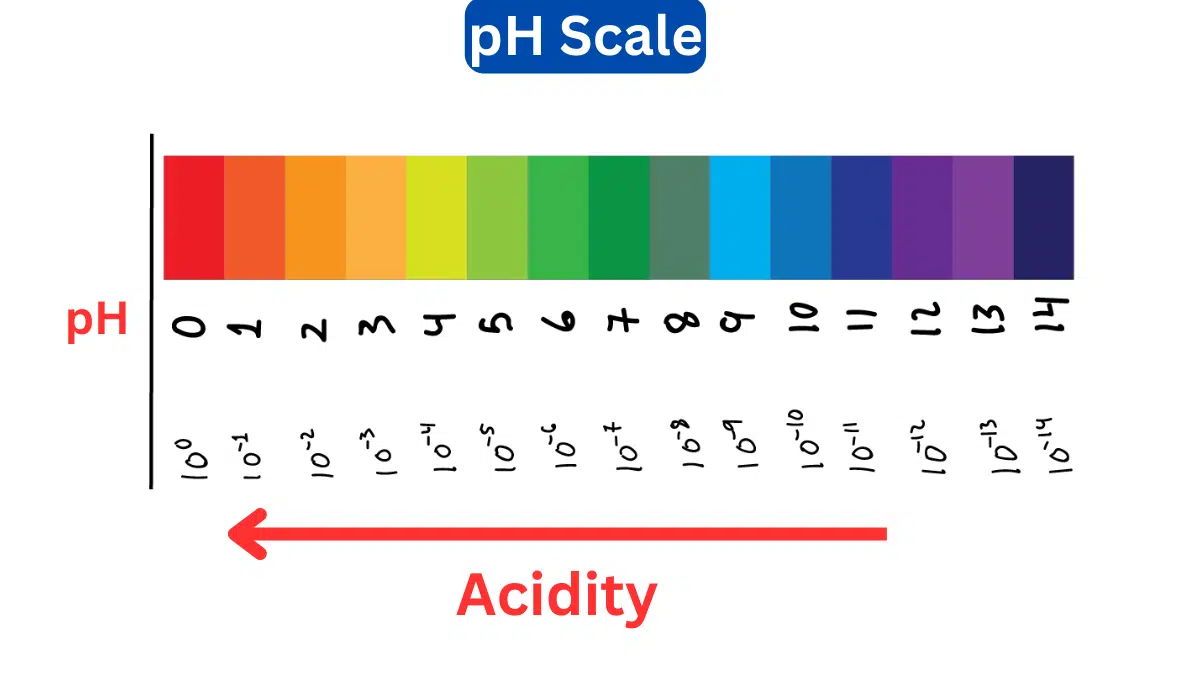What is the Law of Mass Action?- Equilibrium Constant and Applications
Law of Mass Action
The Law of Mass Action is a fundamental principle in chemistry that describes the relationship between the rate of a chemical reaction and the amount of reactants present.
It states that the rate of a reaction is directly proportional to the amount of reactants present, provided that the reaction conditions remain unchanged. This means that as the amount of reactants increases, the rate of the reaction also increases.
The Equilibrium Constant
Consider a general chemical reaction:
aA + bB ⇌ cC + dD
Where a, b, c, and d are the stoichiometric coefficients and A, B, C, and D are the chemical species.
The reaction rate r can be expressed as:
r = k[A]a[B]b = k'[C]c[D]d
Where k and k’ are the rate constants in the forward and reverse directions respectively. [A], [B], [C], and [D] are the molar concentrations of the species.
At equilibrium:
r = k[A]a[B]b = k'[C]c[D]d
Dividing both sides by k'[C]c[D]d and rearranging:
K = [C]c[D]d / [A]a[B]b
Where K is the equilibrium constant. This proves mathematically that the equilibrium constant for a chemical reaction depends on the product of the molar concentrations of the species raised to their stoichiometric coefficients.
Examples
Example 1: Chemistry of Oxygen
The reaction between oxygen gas and hydrogen gas to form water vapor:
2H2(g) + O2(g) ⇌ 2H2O(g)
The law of mass action predicts:
Rate = k[H2]2[O2]
The rate of formation of water is proportional to the square of the hydrogen concentration and the first power of the oxygen concentration. If we increase the amount of hydrogen while keeping oxygen constant, the reaction rate increases.
Example 2: Reaction Quotient
For the general reaction:
aA + bB ⇌ cC + dD
The reaction quotient Q is:
Q = [C]c[D]d / [A]a[B]b
If Q < K, the reaction will proceed in the forward direction. If Q > K, the reaction will proceed in the reverse direction. Only when Q = K will the system be at equilibrium.
The law of mass action and reaction quotient allows us to understand and predict the kinetics and equilibria of chemical systems. It is one of the most important laws in chemistry.
Relation between Kc, Kp, and Kx
Here is an explanation of the relationship between the equilibrium constants Kc, Kp, and Kx:
The equilibrium constant K depends on the standard state chosen to express the concentrations or partial pressures of the reactants and products. The most common equilibrium constants are:
Kc – Equilibrium constant expressed in terms of molar concentrations (mol/L) and used for reactions in solution.
Kp – Equilibrium constant expressed in terms of partial pressures (atm). Used for gaseous reactions.
Kx – Equilibrium constant when the species are in their standard states.
The relationships between the different equilibrium constants are:
Kp = Kx . P Δng
Where Δng is the mole of the gaseous reactant.
This allows interconversion between different equilibrium constant expressions based on the reaction conditions. Kx is useful for comparing equilibrium constants of similar reactions. Kc and Kp are useful in actual reaction conditions in the solution or gas phase.
Applications of the Law of Mass Action
Here are some important applications of the law of mass action:
1. Reaction Kinetics: The law of mass action allows the prediction of reaction rates and kinetics based on the concentrations of reactants and products. This is applied extensively in chemical engineering for designing reactors.
2. Reaction Mechanisms: The law provides insights into complex reaction mechanisms involving multiple steps. Each elementary step will follow mass action kinetics.
3. Equilibrium Constants: It form the basis for the calculation of equilibrium constants (Kc, Kp) which determine the extent of a reaction. This helps determine yields and optimize conditions.
4. Catalysis: Catalysts can alter reaction rates and equilibria by changing the reaction mechanism. The law of mass action describes how catalysts affect the kinetics.
5. Solubility Products: Solubility equilibria of ionic compounds like CaSO4 and PbCl2 in water are applications of the law of mass action regarding undissolved solids.
6. Buffer Solutions: Buffer solutions resist pH change through equilibrium reactions between weak acids/bases and their conjugate base/acid. The law of mass action governs this behavior.
7. Titration Curves: The shapes of acid-base titration curves depend on the equilibrium constant Ka of the acid/base reaction, as dictated by the mass action expression.
8. Phase Equilibria: Phase diagrams of mixtures involve equilibria between liquid, vapor, and solid phases. The law of mass action applies to each equilibrium.
The law of mass action has broad relevance in studying chemical systems and is a pillar of physical chemistry. It links the macroscopic properties of a chemical reaction to the molecular scale through concentrations.




Leave a Reply